This is a test for your brain. And its method is tried and true.
You know, your brain always overpowers the other areas of your body, and that’s natural. It’s the CEO of your body. It tells everything what to do and how to do it.
Let’s say your eye sees something interesting.
Instantly, your eye tries to tell the brain, ”Hey, I see this dark shape over here, and it’s dominating my visual field.”
But the brain, who thinks it knows everything, says smiling, “No, you see that pretty object over there that your hands just placed on that table. Why? Because I’m really liking that thing, so I’m featuring it there on the table for everyone to see.”
“No,” the eye fires back. “I don’t notice that thing at all. What I see is that chair, those beautiful doors, floors, light fixture, and that piece of art over there, because it has lots of contrast and really stands out.”
Get it? Do you see what I mean?
Sometimes your mind plays tricks on you.
As a result of you having a personal affinity, or attraction for something, you (your brain) become focused on it, not what is really being seen. This means there can be times when you’re not looking at things -- a room for example -- with eyes that are totally objective and wide open.
I’ll never forget my first drawing class in college. And when I say "first" I mean it literally was the first drawing class I had ever taken.
We had our newsprint sketchpads on easels, charcoal in hand, and all of us were positioned in a circle with our professor walking around the room behind us. In the center of the circle was a pedestal of some kind, piled with books and a big white sheet draped over the top, like a ghost -- This was our subject.
Our professor said, “Begin.”
“How in the world do you draw a sheet?" I asked myself quizzically.
Despite my confusion, I started in anyway, drawing the form I saw in front of me. With the sheet draping down towards the floor, it looked kind of like a mountain with valleys.
Before long, my professor stopped behind me, and I stopped breathing a moment. I knew I didn’t understand what was going on, and my sketch was looking really bad compared to everyone else’s. It looked like a stick figure drawing. Like an outline of a mountain.
“Where do you see lines like that on the sheet?” he quietly asked.
“Hmmm. I don’t?” I said, very unsure of myself.
He told me to hold my charcoal on its side and shade in what I REALLY saw, to start slowly, with the darkest areas, and shade it with charcoal to reflect the gradual change in contrast.
My mind was telling me I saw a mountain that had a hard, dark, lined edge. But that wasn’t what I really saw.
What I really saw were the soft folds, the grays, and the subtleties of shading that those folds created within the white sheet. They faded in and out, some appeared very dark in certain places, and lighter in others.
By the time I finished that class, my eyes had opened. I had really just begun to see.
So, when you think you’ve designed a great looking room, yet something about it isn’t really working and you can’t explain why, do this:
Step back and squint.
(It works -- I promise. It’s my own tried and true method.)
Because, when you do, what contrasts the most, and what truly is most noticeable, will begin to stand out beyond the fog, beyond the eyelashes. No longer will your brain force its authority upon you. You'll see the facts, the reality. You'll see what’s really there.
Don't believe me? Then try it yourself.

